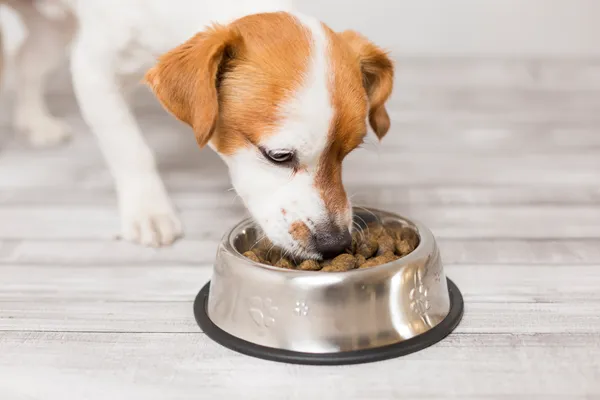Is your dog turning up their nose at mealtime? Dealing with a picky eater dog can be frustrating, especially when you’ve tried multiple brands and flavors. Palatability is a key factor in commercial pet foods, often tested rigorously before hitting shelves. Yet, some dogs remain finicky, holding out for something better. Before assuming it’s just a matter of taste, consider underlying issues and practical strategies to encourage consistent eating. This guide draws from veterinary expertise to help you address the problem effectively.
Many picky eater dogs respond well to simple adjustments, like mixing in appealing toppers. For instance, check out the best wet dog food to mix with dry for enhanced flavor without overcomplicating their diet.
Rule Out Underlying Medical Conditions First
The first step with any picky eater dog is consulting your veterinarian to exclude health problems. Appetite changes can signal serious issues, even if your dog seems otherwise fine.
Common culprits include dental disease, which causes pain from hidden gum infections or abscesses invisible to the naked eye. An oral exam and dental X-rays can reveal these. Kidney disease elevates toxins like urea, making dogs feel nauseous and disinterested in food. Gastrointestinal blockages from swallowed objects or parasites disrupt digestion, while arthritis in seniors makes reaching the bowl painful.
A comprehensive check-up—bloodwork, urinalysis, fecal tests, and imaging—rules these out. According to the American Veterinary Medical Association (AVMA), early detection prevents nutrition gaps that worsen picky eating. Vets like those at the ASPCA Animal Poison Control Center emphasize ruling out medical causes before behavioral tweaks.
 Dog refusing food from bowl, illustrating picky eating behavior
Dog refusing food from bowl, illustrating picky eating behavior
Assess Your Dog’s Calorie Intake
Overweight picky eater dogs are common; they may skip meals because they’re already full from excess calories via treats or table scraps. Calculate needs based on weight, age, activity, and breed—your vet can provide precise figures.
Track intake for 3-5 days: log kibble, treats, meds disguised in food, everything. High-calorie human snacks add up fast. For example, a medium-sized dog needs 800-1,200 calories daily; exceeding this reduces hunger. Switch to measured portions matching the food’s energy density, like oven baked tradition kibble, known for balanced nutrition.
Maintaining ideal body condition score (BCS 4-5/9) via vet guidance ensures they’re hungry at mealtimes without risking malnutrition.
Behavioral Factors in Picky Eating
Human habits often train picky eater dogs. Endless variety—kibble flavors, canned textures, pouches, fresh meals—teaches them to wait for favorites. Spoiling with “just this once” reinforces holding out.
Consistency breaks this cycle. Pick one food, stick to it for 10-14 days. Transition gradually if switching: mix 25% new with 75% old, increasing over a week. Free-feeding (food always available) worsens selectivity; switch to scheduled meals.
Veterinary behaviorists note that routine mimics pack feeding, boosting natural drive.
Understanding Specific Food Preferences
Some dogs genuinely prefer certain textures or flavors—gravy-rich canned over dry, or vice versa. Test systematically: offer dry kibble alone, then canned, semi-moist.
For dry-food fans who nibble slowly, measure the full daily portion in the morning; it won’t spoil if others can’t access it. Top dry with a spoonful of canned for appeal—gravy entices without calories overload. Explore top-rated options like the best dog food 2022 for palatable, vet-approved formulas.
Once identified, consistency prevents flip-flopping.
 Variety of dog foods including kibble and wet options
Variety of dog foods including kibble and wet options
The Risks of Homemade Diets for Picky Eaters
Homemade meals tempt with fresh appeal, but they’re tricky. Human foods lack complete nutrition; supplements for vitamins, minerals, taurine, and calcium are essential.
Recipes must be precise—no substitutions, as each ingredient’s profile is unique. Online DIY diets often fall short, per studies by the World Small Animal Veterinary Association (WSAVA). Deficiencies cause issues like heart disease or bone problems. Consult a board-certified veterinary nutritionist (via acvn.org) for safe recipes.
Commercial foods meet AAFCO standards reliably; homemade suits only under pro guidance.
Proven Tips to Manage Your Picky Eater Dog
With health cleared, try these vet-recommended strategies:
- Scheduled feeding: Offer meals 2-3 times daily, remove uneaten food after 15-20 minutes. Hunger builds appetite.
- Skip a meal occasionally: Healthy dogs (good weight, energy, stools) can miss one safely—many eat better next time.
- Exercise first: Walk before breakfast; activity spikes hunger hormones.
- Puzzle feeders: Slow eating adds fun, mental stimulation.
 Dog interacting with food puzzle toy
Dog interacting with food puzzle toy - Low-cal toppers: Limit to 10% daily calories. Safe options: plain pumpkin, fish oil, or a dab of best food for shih tzu if breed-specific preferences apply. Avoid toxic grapes, onions, chocolate.
- Environment tweaks: Quiet spot, elevated bowl for neck comfort, room temp food (microwave briefly).
For fresh appeal, consider pet fresh dog food near me options vetted for safety.
Patience pays off; most picky eater dogs improve within weeks.
In summary, start with a vet visit to exclude medical issues, then optimize calories, routine, and appeal. Consistency and exercise transform finicky feeders into enthusiastic eaters. Tailor to your dog’s needs for long-term health—your vet or nutritionist provides personalized advice. Share your success stories in the comments and explore more dog nutrition tips on our site!
References
- American Veterinary Medical Association (AVMA): avma.org
- WSAVA Global Nutrition Guidelines: wsava.org
- Board-Certified Veterinary Nutritionists: acvn.org

 Dog interacting with food puzzle toy
Dog interacting with food puzzle toy